 | ||
| Your browser is not supported. | ||
|
Please browse our site using any of the following options:
| ||
How to sew - a guide to sewing for beginners
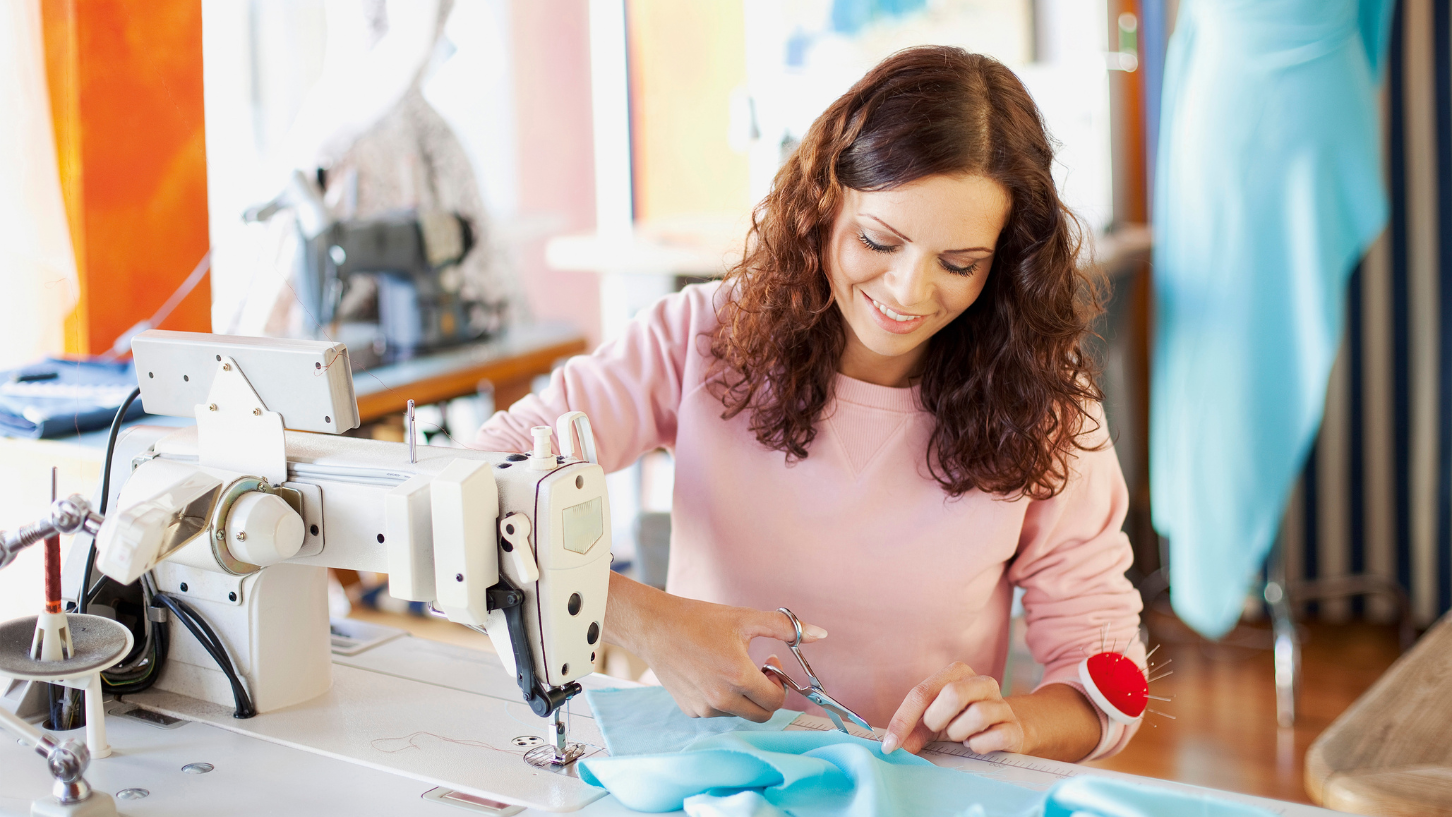
Sewing can seem like a daunting hobby to begin, even for seasoned crafters. But not only is it a fun way to pass the time, but sewing is also a very useful skill to have in your toolkit - you can extend the life of clothes, blankets, curtains and almost anything made from fabric. While you can take sewing classes in person, a great way to start sewing for beginners is with an online guide - like this one! Sewing can be done with the help of a sewing machine or by hand, both of which we will cover in this article. Ready to start sewing? Let's begin!
Quick Links
- What are the benefits of sewing?
- What do I need to start sewing?
- How do I use a sewing machine?
- Why are ironing and pressing so important?
- How do I hand sew?
What are the benefits of sewing?
Besides being incredibly useful, sewing actually has a range of physical and mental benefits anyone can take advantage of. Did you know that sewing:
- Improves your hand-eye coordination? Because you'll be cutting, stitching and sliding fabric, your spatial awareness using a sewing machine is going to improve in leaps and bounds. Hand sewing works this skill even more, as needle and hand placement becomes a major responsibility.
- Is good for the environment? Roughly 100 billion pieces of clothing are produced worldwide each year, and 33% of them go to landfill within the first year of purchase. Clothing waste is a huge problem in developed countries - repairing and altering clothes with your sewing skills can help combat this!
- Helps keep your hands and fingers nimble? Repeated, controlled movements of your hands will keep the muscles in your fingers strong and reduce stiffness and pain in arthritic joints.
- Is good for your memory? The constant learning, adjustments and creative thinking your brain is doing while you sew helps keep your mind active and lessens age-related deterioration.
- Is a great way to make new friends? Sewing is a popular craft that has been around for generations and that means that there are many sewing groups and communities for new sewers to join. It's a great way to meet new people, share problems and get feedback on finished projects!
What do I need to start sewing?
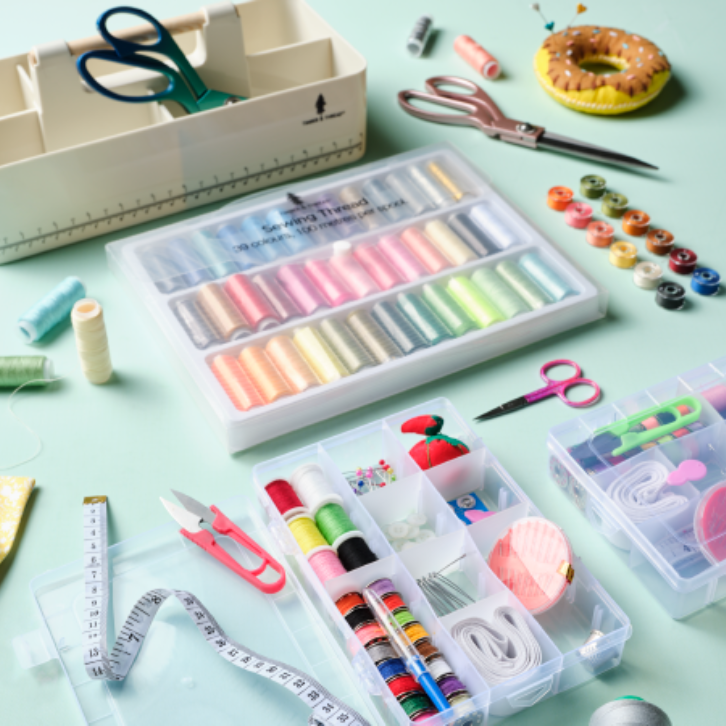
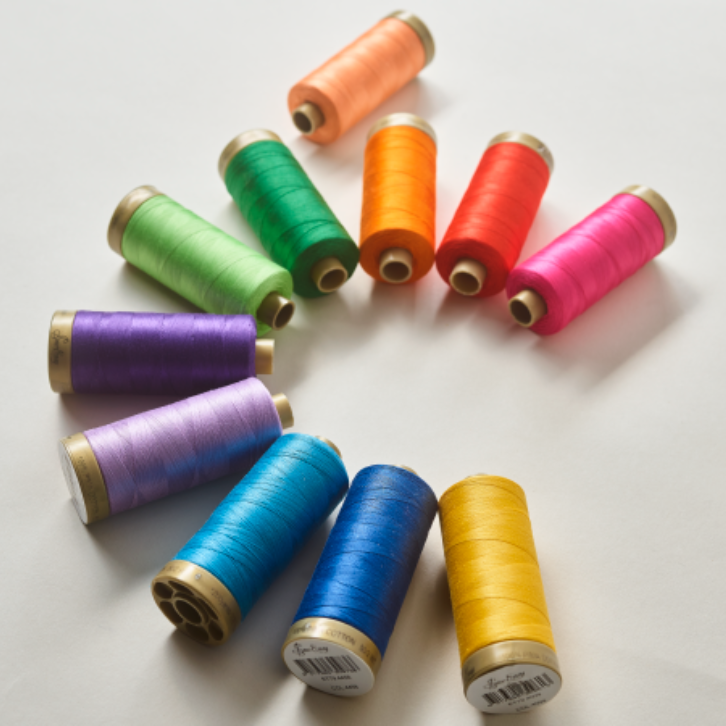
As a beginner there are several essentials you'll need to start sewing. Here's what we recommend:
- A quality sewing machine. Buy the best you can afford, as a good sewing machine will have more functions and break less.
- Cotton fabric. Cotton is a forgiving fabric and perfect for beginners, plus it can come in almost any colour.
- Some all-purpose sewing thread. A good general choice is a 100% polyester thread, as it is strong but flexible.
- Sewing needles for your machine and for hand use. The needle in your machine can break, so it is always good to have spares on hand. Most projects will require a little hand sewing, so have needles for that available as well.
- Fabric scissors. You'll want a good pair of fabric scissors and a rotary cutter. Do not be tempted to use your fabric scissors for anything other than fabric - you want them to stay sharp for as long as possible!
- Measuring tape will ensure you cut and sew the right amount the first time, every time! Try not to forcibly stretch your tape, as this can distort it.
- A seam ripper. This handy tool means mistakes are easily fixed - and we all make them, don't worry!
- Some headed pins. Make sure to pick pins that are colourful, so if you drop them you can find them easily. Keep them all together with a pincushion or magnetic pin holder.
If you have some extra space and budget, there are a few extras you can grab that will make things easier as well:
- A self-healing cutting mat. This will save your table or bench from scratch marks when cutting your fabric to size. Many cutting mats also have measurements and angles printed onto them which you can take advantage of.
- A seam gauge. As a beginner, this will really help make sure your measurements are accurate and in line.
- Some extra bobbins. Having an extra bobbin prewound will save you a lot of time and effort if your loaded bobbin happens to run out of thread mid-stitch.
- A water-soluble pen or chalk. You'll need to make indicative marks on your project, so make sure you do it with a utensil that will wash off afterwards!
- A steam iron. You'll need to press and flatten your projects often, so do it right with a quality iron.
- A thimble will help keep your fingertip safe as you sew - you don't want blood on your sewing project, trust us!
Have a browse through our sewing and fabrics selection online - you'll find all you need and more!
How do I use a sewing machine?
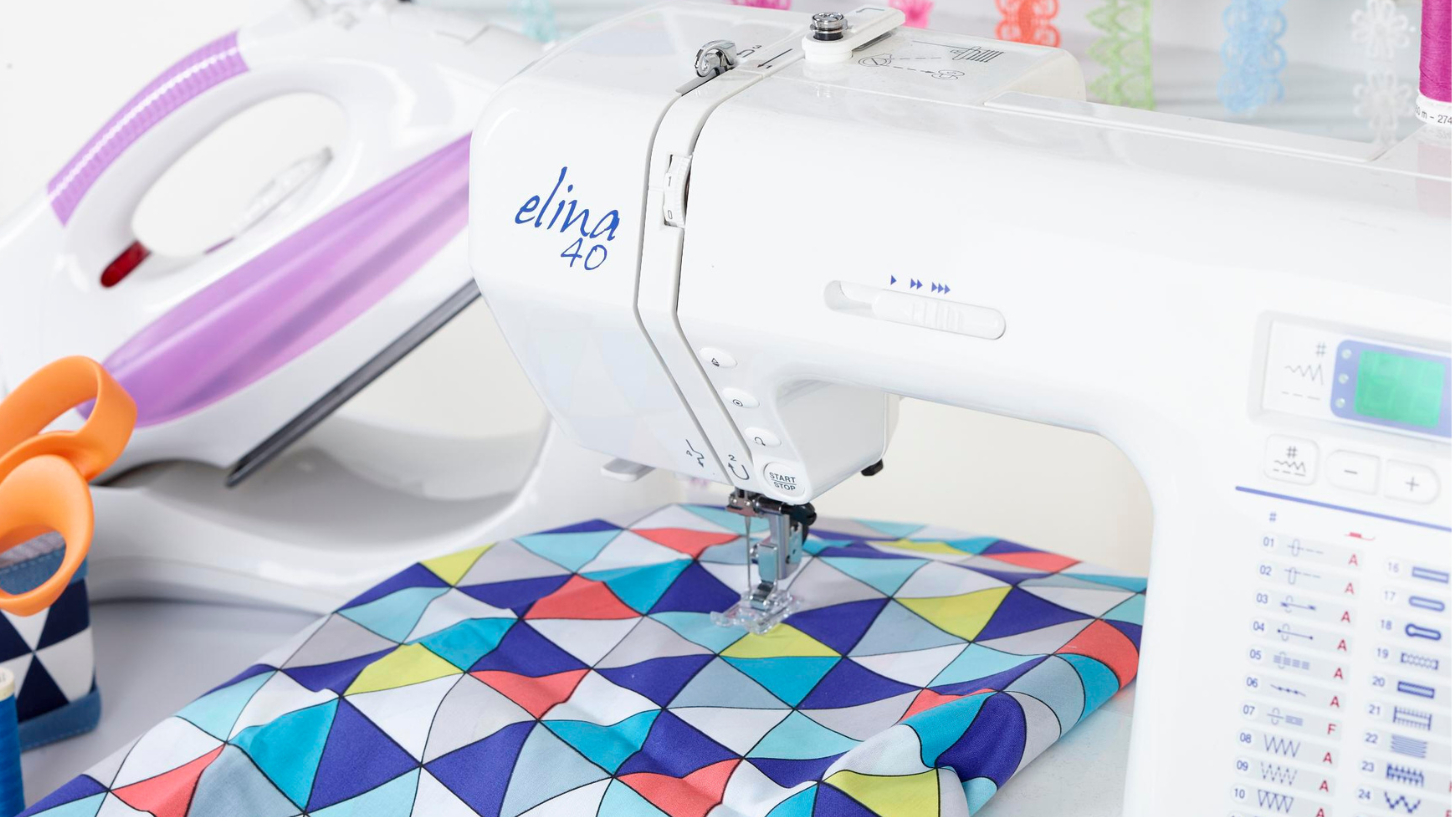
Sewing machines look complicated and quite scary at first, but they'll quickly become your best friend when it comes to sewing. A sewing machine allows you to complete a project much faster than you would by hand, as well as providing a professional finish you just can't achieve by hand.
How to set up and how to thread a sewing machine
Every sewing machine is a little bit different, but there are general steps you can take to set up and turn on your machine. Every new sewing machine will come with a manual, and this should be your first port of call for setting it up. But if you buy one second-hand or inherit one from a family member who no longer uses it, don't despair! Many sewing machine manuals can be found online for free.
If you have no luck finding a manual for your sewing machine, try the following steps to set it up:
- Locate your machine's power cord and power switch. The cord will attach to the foot pedal, which you should place somewhere on the floor where you can comfortably press it while sitting down. Plug everything in and power the machine up.
- To thread your sewing machine, start by choosing your thread and placing the spool into the intended compartment at the top of the machine. Cap the thread with a spool holder so it doesn't fly off! Make sure, if your spool holder is horizontal, that your thread unravels over the top of the spool, not underneath. If your spool holder is vertical, you want it unravelling in an anti-clockwise direction.
- We need to get some thread onto our bobbin, so start by taking the end of your thread and wrapping it around the small knob on the top of your machine (some machines may have an extra hook here as well). Make sure it is caught between the two tension discs that make up this knob, and not underneath.
- Hold your bobbin in one hand and the end of the thread in your other. Your bobbin will have little holes on either side of it - poke the thread up through a hole towards the top and then wrap the thread around the middle of the bobbin a few times in an anti-clockwise direction.
- Pop the bobbin onto the small spindle on the top of the machine, then push it across so the bobbin is next to the stopper. Some machines may have you move the stopper to the spindle instead - just try to move both and see which one moves on your machine.
- On a mechanical machine, pull out the hand wheel on the right, as this will stop the needle moving as we wind the bobbin. A digital machine will detect you are winding
a bobbin and stop the needle from moving automatically. Hold the loose end of the thread poking up from the bobbin and put your foot down slowly on the foot pedal - your machine will begin to wind thread onto the bobbin. You can let go after a few seconds of winding. Make sure the thread is winding onto the bobbin and not onto the spindle underneath! - Load as much thread onto the bobbin as you need for your project. Once you are done, flick the bobbin back off the stopper and cut the thread to separate the bobbin from the spool. Trim the loose thread protruding from the top of the bobbin as well.
- To thread the spool, take the end of the thread and look closely at your machine - most will have a clear indicator and even a small diagram to show you where you need to thread it through. Make sure to take it off the tension disc we used to wind the bobbin. Your thread will probably go down, up and down through the machine again before coming out where the needle is. Keep the thread taut the whole time you thread it through the machine.
- Above the needle itself the sewing machine will have a few hooks you need to loop the needle behind - check your manual for the specifics of your machine. Once there, turn your machine off so you don't accidentally stitch your hand and thread the needle.
- To prepare your loaded bobbin, you will need to load it underneath the needle. It will either be directly underneath it, or there may be a side compartment you need to pull out. There will be either a bobbin case to pop the bobbin into or just a well where it clicks into, but either way keep an eye out for a little gap or hook where the end of the bobbin thread needs to hook around.
- To get your bobbin thread up to the surface of the needle plate, look for a hole underneath the presser foot (you may like to take the foot off for this part). Turn the machine on again, hold the spool thread in your left hand and turn the hand wheel so the needle goes down through the plate and comes up again.It should have caught some of the bobbin thread.
- Pull on the thread in your left hand to disentangle both threads and pop any caps or casings needed back over the bobbin.
Congratulations! You have just set up and threaded your sewing machine - now comes the fun part. Whilst this process might seem to take a while, with practice you will have it down to under thirty seconds.
How to sew straight using a sewing machine
Sewing a straight line is a great basic skill that isn't too hard to master - there are lots of easy hacks you can try to sew that perfect line. Here are some of our favourites!
- You can attach a magnetic seam guide to your sewing machine's plate. You will need to make sure you are watching the guide as you sew and not the needle.
- Use the foot of the sewing machine as your guide. You can buy a specialised sewing foot with an adjustable flange you can use to sew straight lines.
- You can use a piece of washi tape or magnetic strip to stick your own guide onto the machine. Line up your fabric against the edge of your tape and sew away! (avoid using a magnetic strip with a digital sewing machine, as you can damage the internal computer)
How to gather fabric
If you want to make ruffles, skirts or dresses then you need to learn how to gather fabric. You will need to create two rows of stitches with a long stitch length, which are then pulled at the end to gather up. To gather fabric you will want a strong bobbin thread, plus you'll need to set your machine to its longest straight stitch, which on most machines will be 4.0.
- On the right portion of your fabric, stitch two parallel rows of straight stitch right inside the seam allowance, leaving a long tail of 10cm at either end. Do not backstitch at either of the ends. Your stitching rows should start 3mm from the edge - make sure both the rows are inside the seam allowance.
- On the underside of the fabric, grab the tail of the bobbin thread and gently pull it to start gathering towards the middle from each end. Ensure you grab the bottom bobbin threads and not the top ones to make the gathering as easy as possible.
- Once your fabric has gathered to the correct length, tie off each end and cut the threads. Readjust the gathers to make them evenly spaced. Make sure to press your gathers with your iron on a steam setting, as you will find they will sit much flatter and look finer.
- To attach your gathered material to a flat piece of fabric, place it wrong side up and pin it onto the edge. Backstitch at both ends and then stitch with your normal seam allowance. Because you have done the gathers inside the seam allowance it will be just outside the gathering stitch. Be careful that the gathers don't get ensnared in your presser foot. Use a seam ripper to remove any gathering stitches that are still visible after you press the seam open.
How to sew knit or stretchy fabric
When sewing knit or stretchy fabric, you will need an equally stretchy thread, otherwise it will break when the fabric stretches. Avoid cotton thread and stick to polyester thread in these cases.
A zig-zag stitch or, even better, a 3 step zig-zag stitch is great for stretchy fabrics because they can 'stretch' with the fabric and avoid tunnelling. Your sewing machine should have options for both of these stitches on one of the dials, making creating this handy stitch easy.
An overlocker machine is also a handy tool for sewing knit or stretch fabric!
How to sew woven fabric
Woven fabric is a little easier to sew than stretch and knit fabric, however the edges always fray and so will need to be finished. Use a straight stitch for working with them and finish edges with a zig-zag stitch, or use pinking shears to create an edge that has less chance of fraying.
For a video demonstration of some of these techniques (plus a few extras!), check out the video below:
Why are ironing and pressing so important?
You'll never be able to create a truly professional-looking piece without pressing, no matter how talented a sewer you are! It is extremely important to press your seams flat before you sew another seam that is going to cross it. Most of the time you will want to press your project, which means moving the iron down onto the material and then lifting it off without moving it. Moving the iron back and forth on the material can actually cause the fabric to distort, so it should be avoided unless your specific project calls for it.
You can also use what is called a 'heat press' instead of an iron if you have one, but these can be quite big and can't be manoeuvred like an iron can.
How do I hand sew?
Hand sewing is a great place to start if you can't afford a good sewing machine or just want to start slow. Hand sewing allows for greater control and greater understanding of your stitches, and allows for complicated techniques that just can't be replicated by a machine.
How to thread a needle by hand
Threading a needle by hand can be tricky, but there are a few reliable techniques you can use to get the job done. Be sure to cut your thread with sharp scissors at an angle, as this will help prevent fraying. Make the end of the thread stiffer using water or saliva, or even wax if you want it permanently bound. If you are still having trouble, invest in a needle threader - they're easy to use and get the job done quickly.
How to knot your sewing thread
Once you have threaded your needle you'll need to tie a knot so the thread doesn't slip back through as you sew. There are two easy ways to make a knot:
- Thread the needle and have the length of your thread facing down the point of your needle. Wrap the thread around the body of your needle a few times and then ease the coils down the body of the needle. It will tighten as you go and then become a knot once the coils have reached the thread.
- This time you use your finger to create the loops around, instead of the needle. Place the end of the thread on your index finger and hold it in place with your thumb.
Wrap the thread around your finger a few times, then use your thumb to slide the loops towards the tip of your finger - let them wrap around each other as you do this. Once it comes off your finger, tighten them into a knot.
How to sew a button by hand
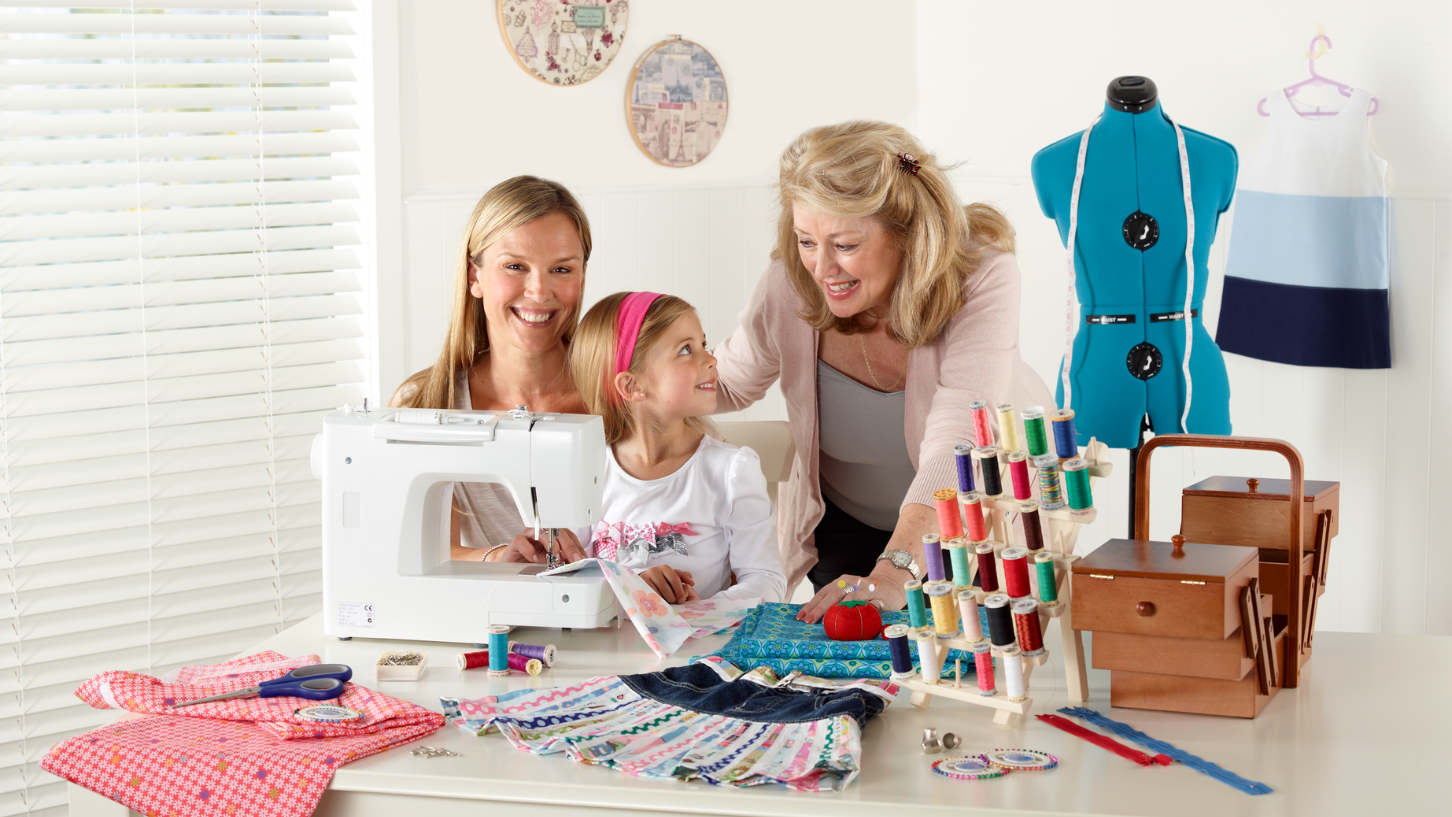
Sewing a button is a handy skill that's easier to do by hand than with a machine. If you have a small sewing kit with you, you can fix buttons whenever they fall off! Make sure you are using a good amount of thread that matches your garment, and that the ridge on the button is facing up, not down against the fabric.
- Create a knot and poke your needle and thread up through the fabric where you want your button to go. Pull the thread all the way through until the knot is flush against the back of the fabric.
- Thread the needle through one of the holes in your button and pull the button down so it is sitting against the fabric. Then, thread the needle through the opposite hole of the button down through the fabric. Make sure to pull the thread tight.
- Keep going in and out of the same two button holes, making sure to poke the needle through or very close to the same whole each time. Continue until you have done this four times.
- Now do the same motion with the other two holes left in the button - you will create an X shape in the centre of the button. Do this four times again until you finish with the needle on the underside of the fabric.
- Push the needle through the underside of the fabric again near the X, but don't go through the button. Instead, wrap the thread around the base of the button (the space between the button and the fabric) four times, pulling it tightly each time. This will strengthen the connection and create a small space that will make using the button easier.
- Thread the needle back through to the underside of the fabric. Create a stitch and leave a small loop when you pull it through, then thread the needle through this loop to make a knot. Make another stitch and another knot for added stability, then snip the end of the thread off.
Congratulations, you now know how to sew a button!
Start sewing with Spotlight!
Welcome to the incredible world of sewing -
we hope you'll stay a while! Sewing is an extremely useful skill that is also so much fun to practice, plus there's an endless supply of projects out there you can make.
For some great inspiration on what you can start sewing, check out our articles on beginner sewing projects and some extra tips from an expert. Once you are comfortable, browse our sewing projects page for heaps of fun sewing ideas to try!




